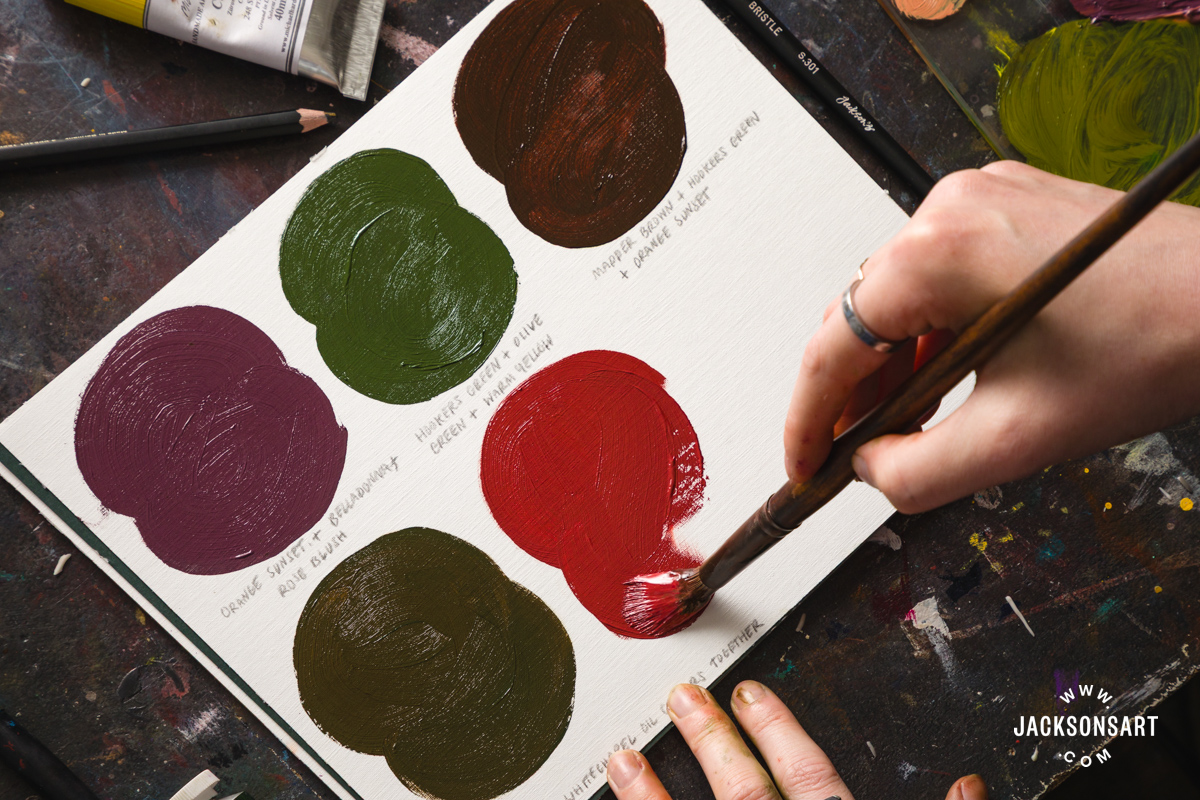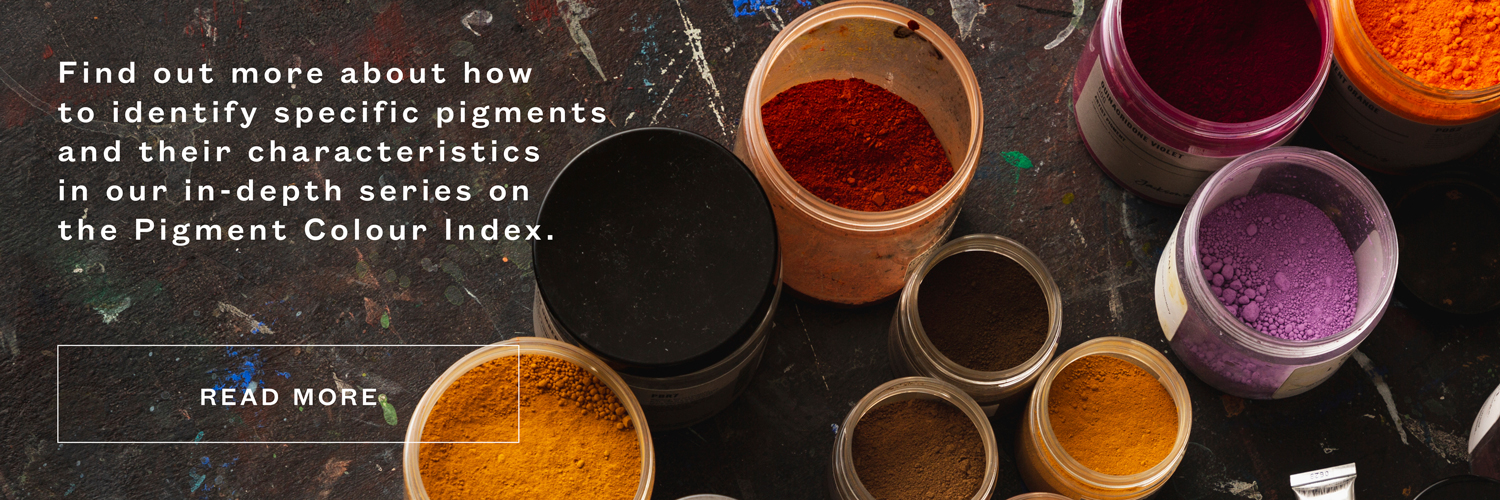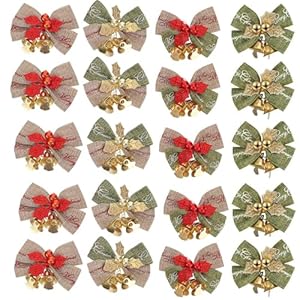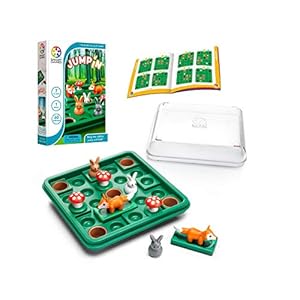
The Michael Harding Whitechapel Oil Colour collection and set is the third of four new releases to celebrate forty years of the brand. Following on from the Tunbridge Wells and Brick Lane releases which look back on the history of the company, the Whitechapel release acknowledges the second location of the business after Michael Harding moved out of Brick Lane. Each of these celebratory releases brings 10 new oil colours to the range. The Whitechapel selection specifically gives oil painters the opportunity to use seven colours that previously appeared in the Michael Harding watercolour range. This article reviews each new colour in the Whitechapel collection and explores some of their colour mixing possibilities.
Review of Michael Harding Whitechapel Oil Colour Collection and Sets
Properties of the Whitechapel Oil Colour Collection and Sets
The Whitechapel collection creates a hot palette, mainly made up of warm oranges and yellows, that moves towards reddish browns. The two greens are cooler, but I wouldn’t say any of these colours are truly cool-toned. The purple is rich and deep and compliments each of the colours beautifully. A painting made entirely from this palette would feel scorched by the sun, with some areas of cooler shade to shelter from it. For a summer release, the Whitechapel selection feels akin to a hot day in East London.
The exceptional quality you expect from Michael Harding paints is no different in this collection. Consistent with the rest of their range, each paint is handmade using pure pigments, ground in linseed oil, and solvent-free. As in their other box sets, each tube contains 40 ml of paint.
The opacities in the set are varied, with just one opaque colour – Warm Yellow – and three semi-opaque colours: Rose Blush, Herculane Red, and Orange Sunset. The majority are transparent, including Citron, Madder Brown, Permanent Brown, and Belladonna, while Hookers Green and Olive Green are semi-transparent. Since the set leans more towards transparency, I will also test glazing some of these colours. For each of the following swatches I painted on Jackson’s Oil Paper.
Swatching the Colours
Warm Yellow
Pigments: PW6, PY83 (Titanium White and Diarylide Yellow)
Series Number: 2
Opacity: Opaque
Lightfastness: Excellent
Warm Yellow is a golden butter colour, and adds a bright and fresh quality to the set. This is the only opaque paint in the set, but is also lovely when mixed with more medium and painted thinly. The pigment Diarylide Yellow used to be made from the urine of cows that had been fed mango leaves, and can be seen in lots of Mughal miniature paintings. Today this alternate version of the colour is a synthetic organic Lake so contains no animal byproducts. This new Warm Yellow is the tinted version of Michael Harding’s Indian Yellow, which contains Diarylide Yellow alone, and is transparent.
Citron
Pigments: PY175 (Benzimidazolone Yellow)
Series Number: 2
Opacity: Transparent
Lightfastness: Excellent
Citron appears close to a primary yellow, and is brighter than Warm Yellow since it contains pure yellow pigment with no white. It is a crisp dandelion colour, and when used in transparent glazes would bring the sunlight to your work. It is also perfect for mixing bright greens and oranges.
Rose Blush
Pigments: PW6, PY42, PV19 (Titanium White, Yellow Iron Oxide, Quinacridone Rose)
Series Number: 2
Opacity: Semi-Opaque
Lightfastness: Excellent
Rose Blush feels like flushed cheeks and is a ruddy, warm matte pink. I can imagine this colour being very useful for portraiture. This mixed pigment colour contains Yellow Iron Oxide, which is a warm ginger-yellow that is used in wood dyes, combined with Quinacridone Rose which is a striking pink. Titanium White mutes these two vivid pigments into the flushed orange-pink we see.
Herculane Red
Pigments: PR101 (Synthetic Iron Oxide Red)
Series Number: 1
Opacity: Semi-Opaque
Lightfastness: Excellent
Herculane Red is a terracotta orange-red, which makes sense since the pigment it contains is a common ceramic colourant. Iron Oxide Red was originally made from the mineral Hematite, which has been long used as a primary source of iron, and seen as a pigment in artwork as far back as the Egyptians. Synthetic Iron Oxide Red can also be seen in Michael Harding’s Venetian Red, which differs by being a semi-transparent paint. For both portrait and landscape painters, this Herculane Red will be ideal for bringing out warm details, and would make a great ground colour.
Orange Sunset
Pigments: PO34 (Pyrazolone Orange)
Series Number: 2
Opacity: Semi-Opaque
Lightfastness: Fair
Orange Sunset is certainly the hottest colour in the set, and appears as a strong tomato red, leaning towards orange. Pyrazolone Orange is a synthetic pigment manufactured through a series of chemical reactions, and is incredibly vivid. I found this colour to be the stiffest of the set, and required the most medium to make fluid. But this doesn’t detract from its quality and great mixing potential for heating up other colours in the palette.
Madder Brown
Pigments: PR202, PR101 (Quinacridone Crimson, Synthetic Iron Oxide Red)
Series Number: 3
Opacity: Transparent
Lightfastness: Excellent
Madder Brown appears as a deep red, almost with the quality of a crimson, which leans towards brown when dispersed. It is a perfect blood colour, and was the most fluid paint to handle straight from the tube. In glazes, this colour could set some incredible red-toned lighting, or give life to a muted underpainting. The Quinacridone pigment PR202 is slightly unusual in paint-making, and is most commonly replaced by PR122 – Quinacridone Magenta, which is its brighter counterpart. The Synthetic Iron Oxide Red is the same pigment used in the Transparent Oxide Red already offered in Michael Harding’s range, so you can directly see how the added Quinacridone Crimson has deepened the colour.
Permanent Brown
Pigments: PBr25 (Benzimidazolone Brown)
Series Number: 2
Opacity: Transparent
Lightfastness: Very Good
Permanent Brown is another red-brown, which feels comparable to a Burnt Sienna but with added darkness, being almost a red-black straight out of the tube. This colour is another one that is excellent for glazing since it has such depth. The pigment Benzimidazolone Brown is a transparent alternative to natural brown earth colours, and is another colour well suited to portraiture and landscapes alike.
Belladonna
Pigments: PV23, PR112, PB29 (Dioxazine Violet, Quinacridone Magenta, Ultramarine Blue)
Series Number: 2
Opacity: Transparent
Lightfastness: Excellent
Belladonna is an aubergine purple that appears deep and royal, which also makes a warm black painted straight from the tube. This is a beautiful colour that I can imagine creating deep shadows, on floral paintings, fabrics, and skies. The pigment Dioxazine Violet is also used alone in Michael Harding’s Deep Purple, which is more blue-toned. The Dioxazine Violet is complemented by the addition of Quinacridone Magenta, which is a cool-toned red that makes excellent pinks. Finally, Ultramarine Blue gives this paint its depth and royal hue.
Hookers Green
Pigments: PG36, PR101, PY74 (Phthalocyanine Green Yellow Shade, Synthetic Iron Oxide Red, Arylide Yellow)
Series Number: 2
Opacity: Semi-Transparent,
Lightfastness: Excellent
Hookers Green is a natural leafy green, named after the English botanist and illustrator William Hooker who was the first director of Kew Gardens. It was originally made with a combination of Gamboge and Prussian Blue, but this was prone to fading because of Gamboge’s lightfastness. Today the pigments vary between brands, and the Michael Harding colour interestingly contains no blue. Phthalo Green Yellow Shade also appears as a single pigment paint in the full range. It’s mixed with Synthetic Iron Oxide Red and Arylide Yellow, which is the single pigment in Michael Harding’s Yellow Lake. Needless to say, this green is ideal for painting foliage and landscapes, though also mixed beautifully to create more complex muted colours in my tests.
Olive Green
Pigments: PR101, PY74, PB15:3 (Synthetic Iron Oxide Red, Arylide Yellow, Phthalocyanine Blue Green Shade)
Series Number: 2
Opacity: Semi-Transparent
Lightfastness: Excellent
Olive Green is a deep warm paint, with more yellow appearing as you disperse the colour. This mossy green is perfect for landscapes and portraiture, which I can imagine being very useful for shadows on the face, or underpainting, to bring flesh colours forward. The pigment combination here is very similar to the Hookers Green, with the only change being Phthalo Blue Green Shade, in the place of Phthalo Green Yellow Shade. Despite this they have distinct appearances, with Olive Green appearing much closer to an earthy brown.
Glazing the Colours
Since several of the colours in the Michael Harding Whitechapel Oil Colour Set are transparent I wanted to try glazing them. For my test I glazed Citron, Madder Brown and Belladonna over a dried fluid brushstroke of Ultramarine Blue. Each paint has vivid payoff, consistent colour, and a smooth handling consistency that made adding each stroke very easy to apply.
Mixing the Colours
Next I wanted to try mixing together some of the colours from the set, to show the versatility of the collection. I’ve noted the colours that I combined to create each of these swatches. My favourites from this test are the warm transparency of Olive Green and Citron, the rich red made from Citron and Madder Brown, and the muted purple made with the surprising combination of Orange Sunset, Belladonna and Rose Blush.
The Michael Harding Whitechapel Oil Colour collection comprises ten brilliant additions to their colour range, giving oil painters a plethora of sunkissed new colours to try. I would recommend the set to any oil painter looking to experiment with paints of exceptional quality.
Further Reading
Michael Harding Introduces the Brick Lane Oil Colours
On Location: Michael Harding Handmade Artists Colours
Non-Toxic Oil Painting with Michael Harding Miracle Medium
Shop the Michael Harding Whitechapel Oil Colour Collection on jacksonsart.com
The post Review of Michael Harding Whitechapel Oil Colours appeared first on Jackson's Art Blog.
Trending Products





























